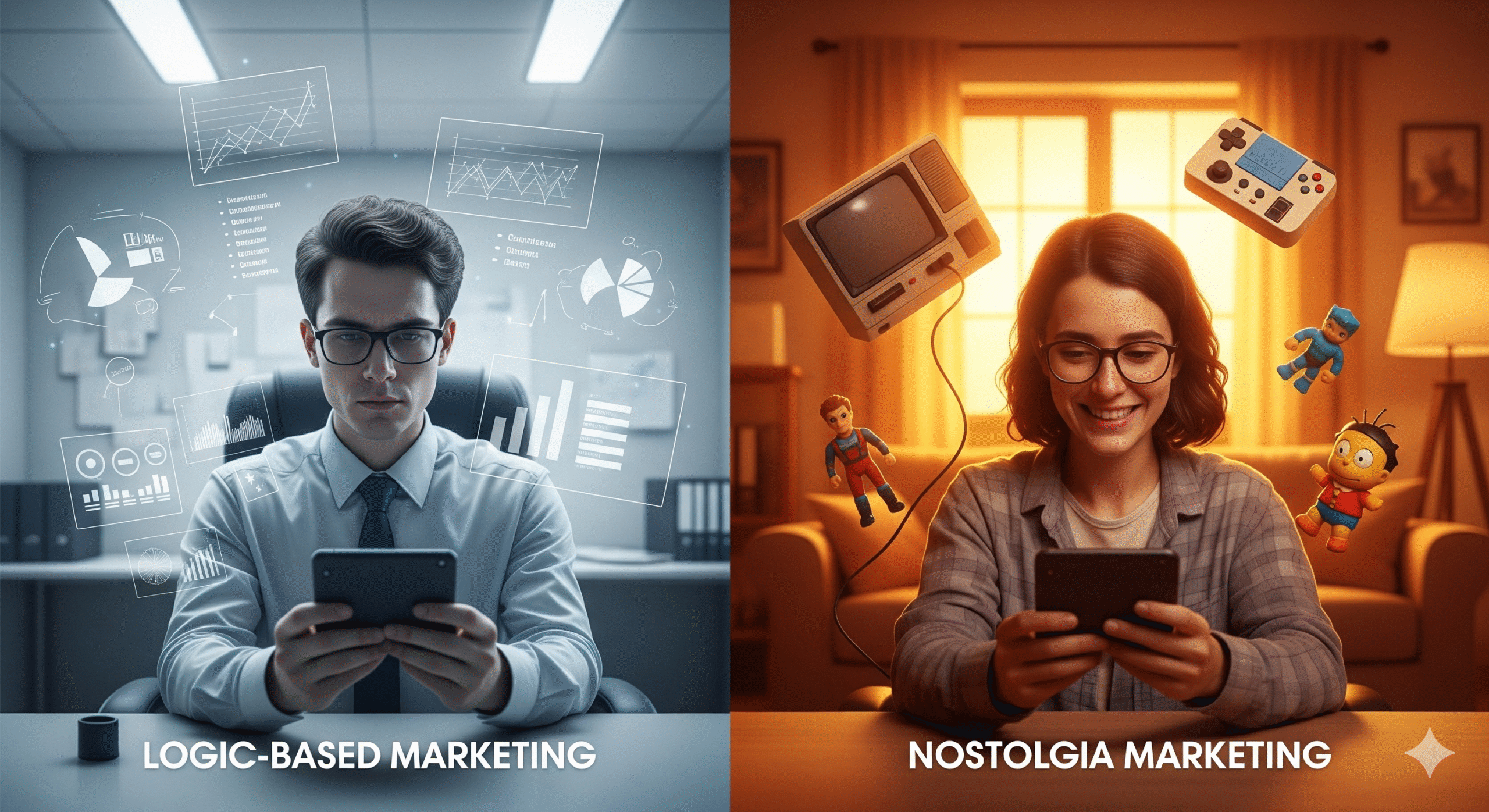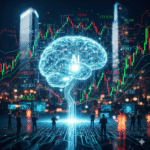To understand why nostalgia marketing is so powerful, we must first understand the science of nostalgia itself. Far from being a mere sentimental yearning for the past, modern psychology views nostalgia as a complex, self-regulating emotion. It’s often triggered by a song, a smell, a taste, or an image that reminds us of a time we experienced as being simpler, safer, or happier.
Neuroscientists have found that when we feel nostalgic, our brains light up in a way that’s different from how we process other memories. The emotion activates the hippocampus, the brain’s memory center, but also the mesolimbic pathway, a key part of the brain’s reward system. This means that when we think about a fond memory from the past, our brain releases a dose of dopamine, a feel-good chemical. This is why nostalgia feels so comforting; it acts as a kind of psychological immune system, soothing us in times of uncertainty and social anxiety.
Furthermore, nostalgia is an inherently social emotion. When we share a nostalgic memory with someone—whether it’s reminiscing about a childhood TV show or a vintage video game—it creates a sense of shared identity and social connection. It reminds us that we are part of a larger community with a collective past. This is the very foundation of successful word-of-mouth marketing.
In today’s world, where we are bombarded by constant change, social unrest, and digital noise, the past feels like a safe harbor. Brands that tap into this deep-seated need for comfort and security are leveraging a powerful, primal human emotion that logic simply cannot compete with.
A Tale of Two Strategies: Logic vs. Nostalgia
On the surface, it seems irrational for a consumer to choose a product based on an old memory instead of its features. But when you compare the two marketing approaches side-by-side, the subtle power of nostalgia marketing becomes clear.
| Trait | Logic-Based Marketing | Nostalgia-Based Marketing |
| Primary Appeal | Rational. Targets the conscious mind. Focuses on features, price, and quantifiable benefits. | Emotional. Targets the subconscious mind. Focuses on feelings, memories, and shared experiences. |
| Brand Loyalty | Conditional. Loyalty is tied to a product’s performance, value, and features. A better competitor can easily steal a customer. | Unconditional. Loyalty is tied to an emotional bond and a sense of belonging. Consumers are less likely to switch. |
| Memorability | Temporary. Information is processed and stored in short-term memory. Messages can quickly get lost in the noise. | Permanent. Messages are linked to powerful, existing memories, making them highly memorable and sticky. |
| Social Impact | Limited. Messages are often one-directional, from brand to consumer. There is little incentive for consumers to share. | High. Creates a shared experience that becomes social currency. Consumers love to share and reminisce together. |
| Purchase Driver | “I should buy this because…” The consumer weighs pros and cons before making a decision. | “I want this because…” The consumer is driven by an emotional desire that bypasses the rational decision-making process. |
Export to Sheets
The key takeaway is that logic-based marketing requires a consumer to actively engage and think, which can be a tiring process. Nostalgia marketing, on the other hand, is effortless. It’s a feeling that resonates instantly, and that feeling is a more powerful motivator than a logical argument.
The Secret Sauce: Key Features of Nostalgia Marketing
So, how do brands successfully tap into this powerful emotion? It’s not as simple as just slapping an old logo on a new product. There are several key features that make nostalgia marketing so effective.
1. The Creation of an Emotional Shortcut
Our brains are wired for efficiency. When we see a nostalgic image—like an old video game console or a classic movie character—it acts as a shortcut. Instead of having to process new information about a brand, our brain immediately retrieves all the positive feelings and associations we have with that memory. It’s a psychological “cheat code” that bypasses the need for a logical sales pitch. The brand isn’t just selling a product; it’s selling a feeling—a feeling of comfort, familiarity, and happiness.
2. Building Brand Trust Through Familiarity
In a world saturated with new brands, new products, and new technologies, consumers often feel overwhelmed and skeptical. Nostalgia marketing offers an instant solution to this problem. When a brand taps into a collective memory, it feels familiar and safe. This familiarity translates into a deep sense of trust that a new brand, no matter how good its features, has to work hard to earn. Consumers think, “I remember this brand. It was part of my childhood. I can trust it.”
3. The Power of “Retromania” and Social Currency
The digital age has not killed nostalgia; it has amplified it. Social media platforms, in particular, are powerful engines for sharing nostalgic content. When a brand brings back a beloved retro item, it gives people a reason to talk about it, post about it, and share it with their friends. This creates a powerful form of social currency. The nostalgic content becomes a topic of conversation, a shared experience, and a viral trend that spreads like wildfire.
4. Creating a “Time Machine” in Times of Uncertainty
When the present feels unstable or the future seems uncertain, people naturally look to the past for comfort. The COVID-19 pandemic, for example, saw a massive surge in nostalgic consumption, from old TV shows and movies to comfort food brands from the past. Brands that understand this dynamic can position themselves as a source of stability, a familiar friend in a chaotic world. They are not just selling a product; they are selling a sense of security and a temporary escape to a simpler time.
The Perils and Promises: Pros and Cons
While the benefits are immense, marketers must tread carefully. A misstep in nostalgia marketing can backfire spectacularly.
Pros:
- Unshakeable Brand Loyalty: Taps into emotional bonds that are more powerful than a logical argument.
- Instant Brand Recognition: Leverages existing memories, making it easier for a brand to stand out in a crowded market.
- Higher Engagement and Virality: Creates content that is highly shareable and becomes a source of social currency.
- Emotional Connection: Bypasses consumer skepticism and creates a deep sense of trust and familiarity.
Cons:
- The Risk of Alienating a Younger Audience: A campaign that relies too heavily on memories from one generation may feel dated and out of touch to younger consumers who have no connection to the past.
- Lack of Authenticity: Consumers are highly sensitive to brands that feel like they are just cashing in on a trend. A campaign must be authentic and sincere to resonate.
- A “One-Trick Pony”: Relying solely on nostalgia can make a brand appear as if it has no new ideas. It can also create a disconnect if a new product doesn’t live up to the nostalgic hype.
- The “Rose-Tinted Glasses” Effect: Nostalgia can be a double-edged sword. People’s memories of a brand or product may be better than the reality, leading to disappointment when they re-engage with it.
The key to a successful nostalgia marketing campaign is to use it as a bridge between a brand’s past and its future, rather than as a substitute for innovation.
Use Cases: Who Should Use Nostalgia Marketing?
Nostalgia marketing is not a one-size-fits-all strategy, but it has proven to be incredibly effective in a variety of industries.
- Food and Beverage: This is a classic use case. Brands can bring back discontinued products, redesign packaging to look retro, or use old jingles in commercials. The emotional connection to food and drink is primal and powerful. Think of the return of discontinued sodas or snack cakes.
- Entertainment: The entertainment industry is a master of nostalgia marketing. From reboots and remakes of classic TV shows and movies to the reunion tours of old bands, they are constantly giving audiences a chance to relive their fondest memories.
- Fashion and Retail: The fashion world is cyclical, and trends from decades past are constantly making a comeback. Brands can tap into this by re-releasing vintage designs or creating new pieces inspired by a nostalgic era.
- Technology: Even the tech world has embraced nostalgia. Nintendo, for example, has seen massive success by re-releasing classic gaming consoles. This allows a new generation to experience the past while providing a trip down memory lane for older consumers.
FAQs: Your Questions on Nostalgia Marketing Answered
What is the psychology of nostalgia marketing?
The psychology of nostalgia marketing is rooted in the brain’s emotional and memory centers. It bypasses our rational thinking and taps directly into our positive memories and feelings of comfort and safety, creating an instant emotional bond with a brand.
Why is nostalgia so powerful in a marketing context?
Nostalgia is powerful because it creates a sense of shared experience and social currency. It reminds consumers of a past they often view as simpler and more secure, which fosters trust and makes them more likely to engage with and share a brand’s message.
What are some successful examples of nostalgia marketing?
Successful examples include the re-release of products like the Nintendo Classic Mini, the revival of TV shows like Cobra Kai, and brand campaigns that have used iconic music and imagery from past decades to appeal to their audience’s memories.
Can nostalgia marketing be a bad idea?
Yes, it can backfire if done inauthentically or if it alienates the younger generation. It can also create a disconnect if the new product doesn’t live up to the fond, rose-tinted memories that a consumer has of the original.
How do marketers measure the success of a nostalgia campaign?
Marketers measure success by looking at key metrics such as social media engagement, viral sharing, and sales numbers. They also conduct brand sentiment analysis to see if the campaign has created a positive emotional connection with the target audience.
Conclusion: The Ultimate Competitive Advantage
In a world where every brand is shouting louder than the next, nostalgia marketing is a quiet whisper that can cut through the noise. It is an acknowledgment that we are not just rational consumers weighing pros and cons; we are emotional beings driven by feelings, connections, and memories. The most successful brands in the future will be those that understand this fundamental truth.
Final Verdict: While logic has its place, it is a cold, rational tool in a world dominated by emotion. Nostalgia marketing, with its ability to tap into our deepest feelings of comfort, trust, and connection, is the ultimate competitive advantage. It’s not just a passing trend; it is a fundamental understanding of what makes us human and a powerful reminder that sometimes, the best way forward is to look back.







Leave a Reply